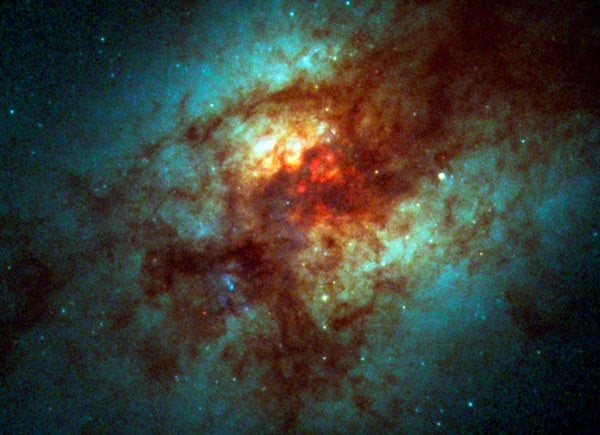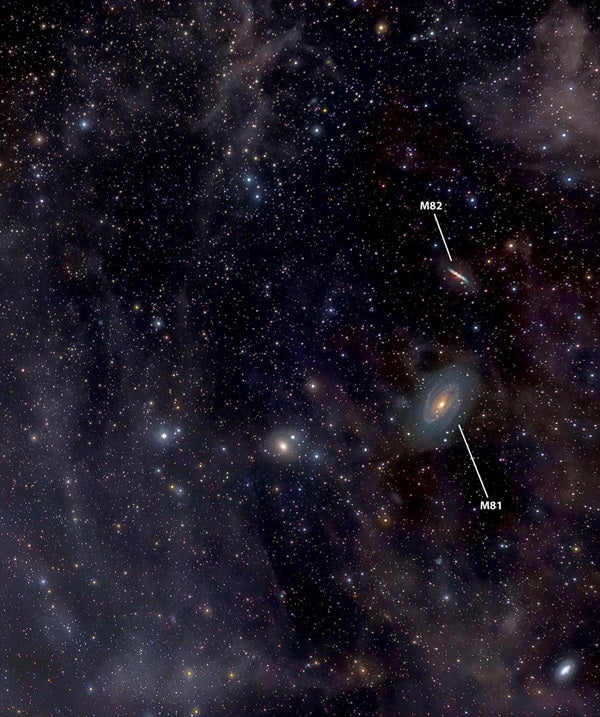Finding blue blobs in space sounds like an encounter with an alien out of a science fiction movie. But the Hubble Space Telescope’s powerful vision has resolved strange objects nicknamed “blobs” and found them to be brilliant blue clusters of stars born in the swirls and eddies of a galactic smashup 200 million years ago.
The findings are being reported by Duilia de Mello of the Catholic University of America, Washington, D.C. and NASA’s Goddard Space Flight Center and her colleagues at the 211th meeting of the American Astronomical Society in Austin, Texas.
Such “blue blobs,” weighing tens of thousands of solar masses, have never been seen in detail before in such sparse locations, say researchers. They are more massive than most open clusters found inside galaxies, but a fraction of the mass of globular star clusters that orbit a galaxy.
Because the orphan stars don’t belong to a particular galaxy, the heavier elements produced in their fusion furnaces may easily be expelled back into intergalactic space. This may offer clues as to how the early universe was “polluted” with heavier elements early in its history, say researchers.
The “blue blobs” are clumped together in a structure called Arp’s Loop, along the tenuous gas bridge. The gas filaments were considered too thin to accumulate enough material to actually build these many stars, says de Mello. But Hubble reveals the “blue blobs” contain the equivalent of five Orion Nebulae.
After finding that these “blobs” were resolved in stars, the team used the Hubble image to measure an age for clusters of less than 200 million years with many stars as young and even younger then 10 million years. Not coincidentally, 200 million years is the estimated age of the galactic collision that created the tidal gas streamers, pulled between the galaxies like taffy.
De Mello and her team propose that the star clusters in this diffuse structure might have formed from gas collisions and subsequent turbulence, which enhanced locally the density of the gas streams. Galaxy collisions were much more frequent in the early universe, so “blue blobs” should have been common. After the stars burned out or exploded, the heavier elements forged in their nuclear furnaces would have been ejected to enrich intergalactic space.
Radio observations with the Very Large Array of radio telescopes in Socorro, New Mexico, gave a detailed map of the intergalactic bridge that revealed knots of denser gas. Studies with the 3.5-meter WIYN telescope on Kitt Peak in Arizona mapped the optical light glow of hydrogen along the bridge. Observations with NASA’s Galaxy Evolution Explorer (GALEX) ultraviolet space telescope revealed an ultraviolet glow at the knots, and that earned them the nickname “blue blobs.” But GALEX did not have the resolution to see individual stars or clusters. Only Hubble’s Advanced Camera for Surveys at last revealed the point sources of the ultraviolet radiation.











